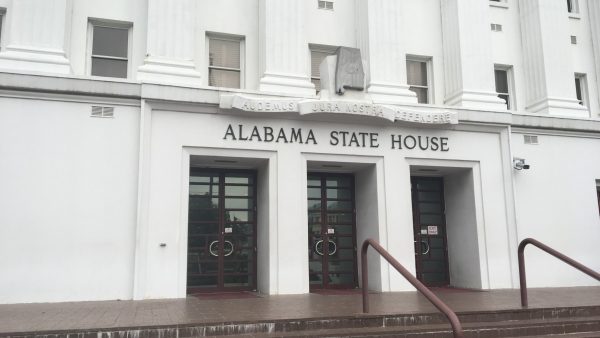Muscle Shoals Sound Studio: How the Swampers Changed American Music
The Shoals area of Alabama is known for a long list of popular musicians who recorded there in the 1960s and 1970s. Artists including Aretha Franklin, The Rolling Stones, and Bob Dylan cut tracks in this otherwise sleepy corner of the state.
But a part of the region’s musical success is thanks to four men nicknamed the Swampers. Keyboardist Barry Beckett, drummer Roger Hawkins, guitarist Jimmy Johnson and bassist David Hood were session musicians who backed many of those top names. They’re the subject of the new book Muscle Shoals Sound Studio: How the Swampers Changed American Music by Birmingham music writer Carla Jean Whitley.
Regular Guys
“David Hood refers to the Swampers as looking like a bunch of guys who would work at the grocery store,” said Whitley. “But these are really just four guys who were and still are talented musicians who were able to stay at home and make a living recording rather than touring.”
While there’s debate over who coined the name, it refers to the “swampy,” soulful sound they produced — a combination of Memphis’ rhythm and blues and Nashville’s country.
The Swampers originally formed to play for FAME Studios in Muscle Shoals before leaving in 1969 to start their own studio, the Muscle Shoals Sound Studio, which was actually in nearby Sheffield.
While the Swampers were already associated with some top acts, from Wilson Pickett to Etta James, it took time for their own business to pick up.
“Jimmy Johnson said to me we were always busy but it didn’t quite occur to us that it would take a little bit of time to generate that buzz,” said Whitley.
Once the buzz did start, artists kept coming and the string of hits continued.
Tidbits from Music History
-The Swamper’s first album in their new studio was Cher’s 3614 Jackson Highway, which happened to be the address of the Muscle Shoals Sound Studio. It didn’t sell well, but became a critical darling.
-Lynyrd Skynyrd recorded the first of two versions of their hit “Free Bird” in the Shoals. The band even mentioned the Swampers in the lyrics of “Sweet Home Alabama.”
-Paul Simon came to Alabama expecting to record one song for his album There Goes Rhymin’ Simon. But the Swampers picked up on the music so quickly they ended up recording five songs including the well-known “Kodachrome.”
-Bob Seger recorded a demo of “Old Time Rock and Roll” with the Swampers. He recorded it with his own band but didn’t feel it had the same sound. So he bought the demo from the Swampers and laid his vocals over it. The familiar “da-da-da” intro is the result of an engineering error.
Black and White
More than a few people were surprised to learn that the musicians backing many notable black artists were white guys.
“There were many producers accused of lying,” said writer Carla Jean Whitley. “Rod Stewart was one of those who took his producer out and said seriously?”
This was the era of civil rights and racial turmoil but that didn’t spill over to the recording studio.
“There were definitely people who did not like that these white guys were recording with these black people,” said Whitley. “But they liked to music so they could get away with it.”
Attitudes among Alabama lawmakers softening on Medicaid expansion
Alabama is one of ten states which has not expanded Medicaid. Republican leaders have pushed back against the idea for years.
Birmingham is 3rd worst in the Southeast for ozone pollution, new report says
The American Lung Association's "State of the Air" report shows some metro areas in the Gulf States continue to have poor air quality.
Why haven’t Kansas and Alabama — among other holdouts — expanded access to Medicaid?
Only 10 states have not joined the federal program that expands Medicaid to people who are still in the "coverage gap" for health care
Once praised, settlement to help sickened BP oil spill workers leaves most with nearly nothing
Thousands of ordinary people who helped clean up after the 2010 BP oil spill in the Gulf of Mexico say they got sick. A court settlement was supposed to help compensate them, but it hasn’t turned out as expected.
Q&A: How harm reduction can help mitigate the opioid crisis
Maia Szalavitz discusses harm reduction's effectiveness against drug addiction, how punitive policies can hurt people who need pain medication and more.
The Gulf States Newsroom is hiring a Community Engagement Producer
The Gulf States Newsroom is seeking a curious, creative and collaborative professional to work with our regional team to build up engaged journalism efforts.







